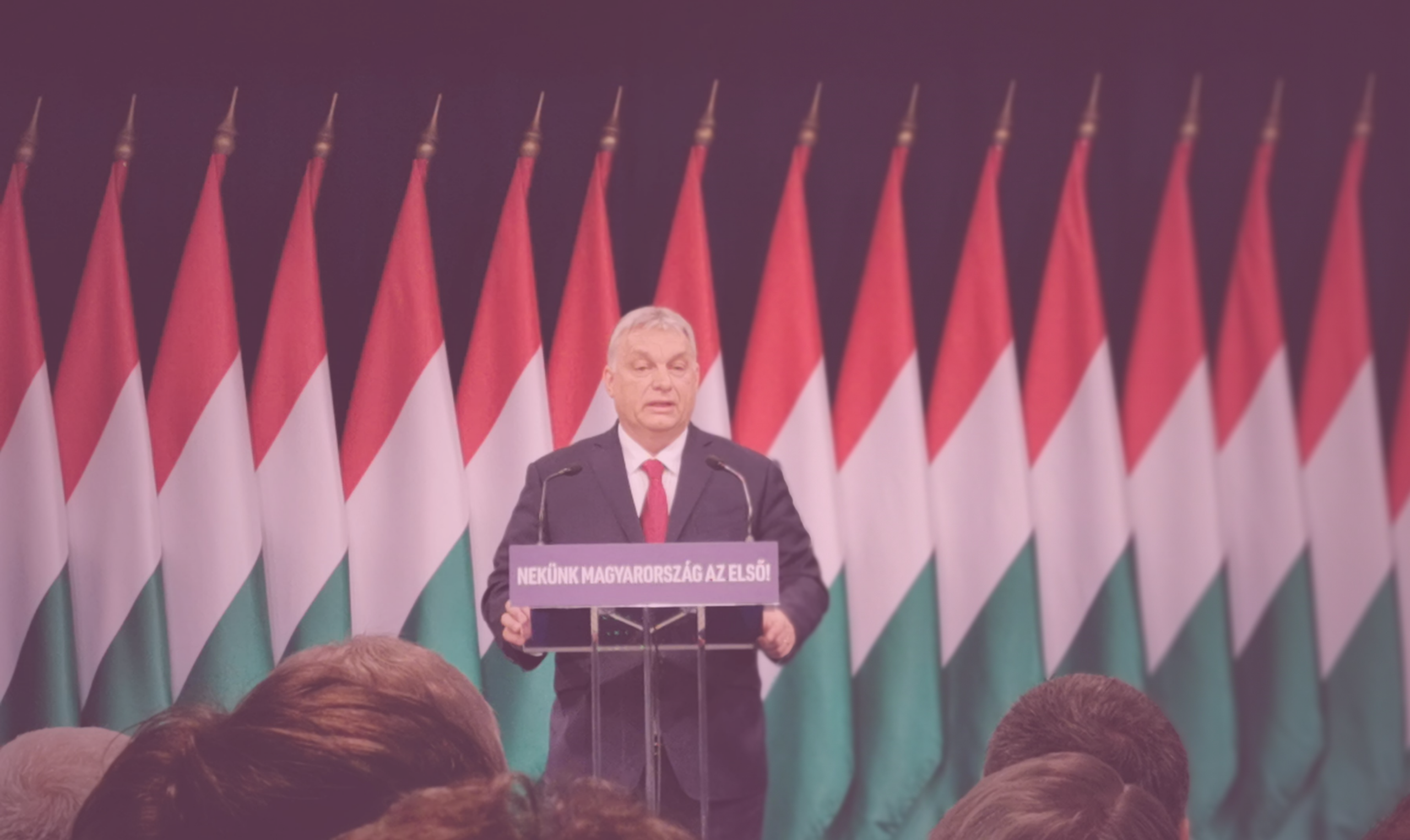Photo: “Évértékelő 2020 (5)“, by Elekes Andor licensed under CC BY-SA 4.0. Hue modified from the original
Peto, Andrea. “The Illiberal Memory Politics in Hungary.” Journal of Genocidal Research, September 3, 2021.
Abstract
In June 2021, the mayor of the small Hungarian village of Hajdúbagos unveiled the statue of Admiral Horthy, praising him as a democrat who “fought equally against communism and fascism.” The unveiling celebration was followed by a quick re-veiling because waste oil had been poured over it the night before.1 This statue is not the first of the controversial Admiral Horthy (1868–1957), leader of interwar Hungary who, as an ally of Nazi Germany, was also responsible for the swift deportation of 430,000 Hungarian Jews after 19 March 1944. There have been several attempts to erect a monument for Horthy as a symbolic act to re-evaluate his life, responsibility and, more importantly, his legacy. Unlike previous attempts though, where the statues ended up on private property after lively public debate, this one in Hajdúbagos remains standing on public property, albeit under the radar of national and international observers, following the examples of other small villages, such as Perkáta, Harc, Nemeshódos, Bodaszőlő and Kálóz.
In the past few years, Hungary has been portrayed as a negative example of memory politics in both mainstream and academic press, charged with being the “ground zero” for a paradigm change in World War II memory politics that was echoed in Poland when the right-wing populist PiS government passed its infamous law on criminalizing certain perspectives in historical research. In an earlier publication, I listed the elements of this paradigm change in Holocaust memorialization, and it is worth reiterating here that they include: nationalization of a hitherto transnational narrative, de-Judaization, competing victimhood, establishing new terminology, double speek, and anti-intellectualism. These elements are present in different contexts but nowhere else are they exhibited so prominently as in Hungary. The erection of statues of Horthy, this paper argues, demonstrates that this paradigm shift is taking place without recourse to original ideas and yet is nonetheless successfully reshaping memory discourse.







